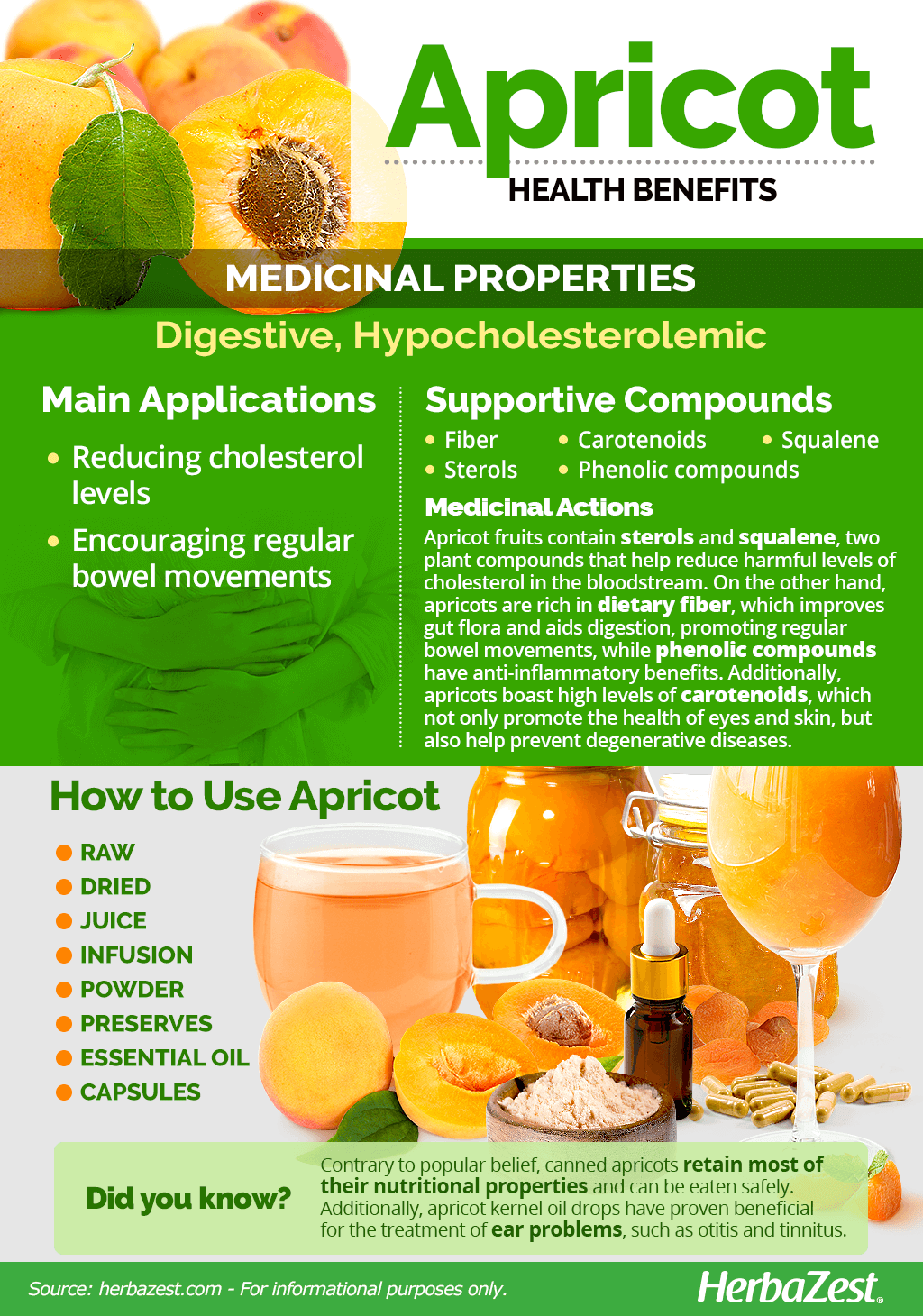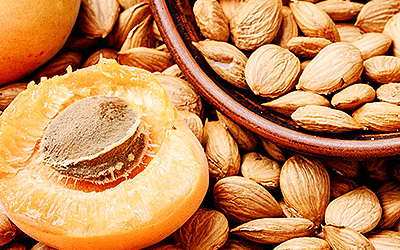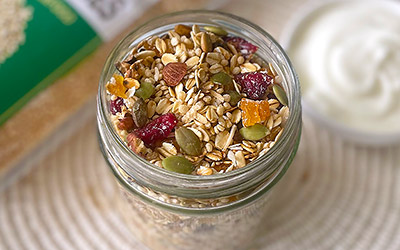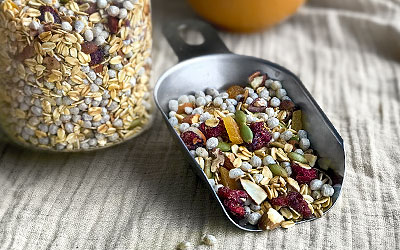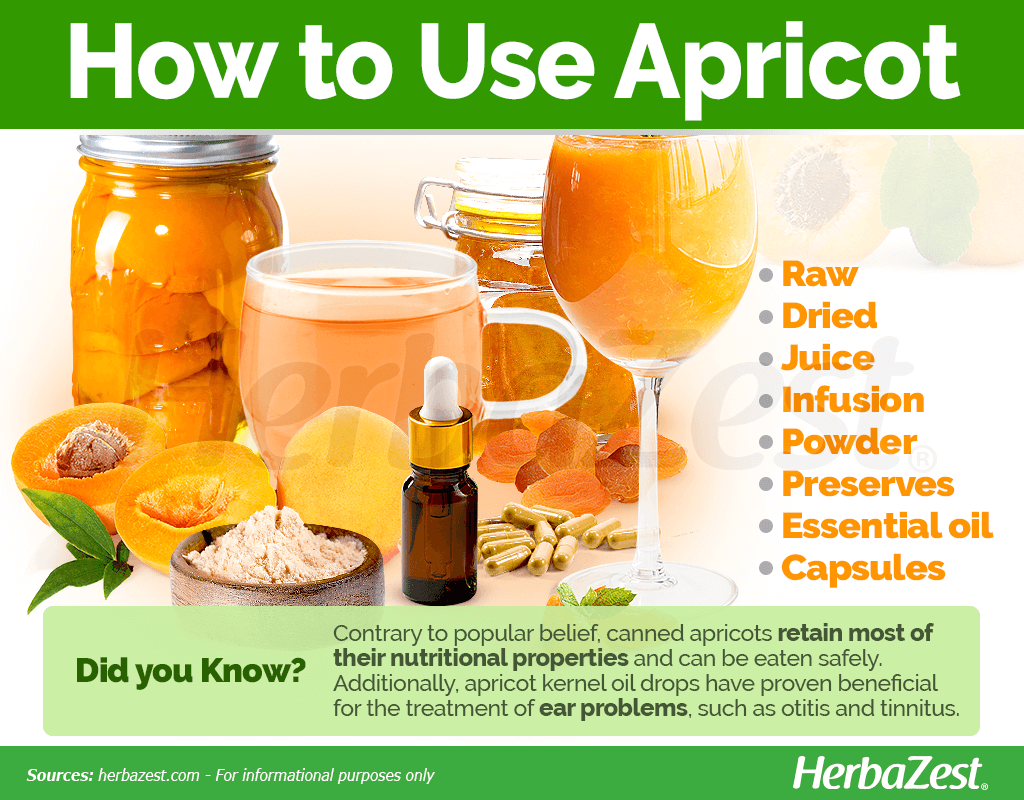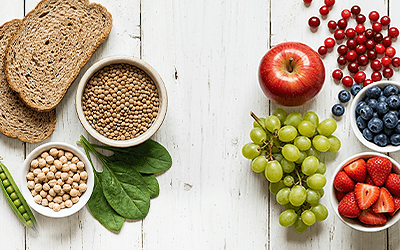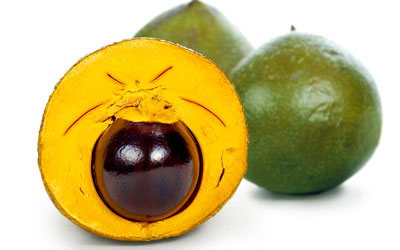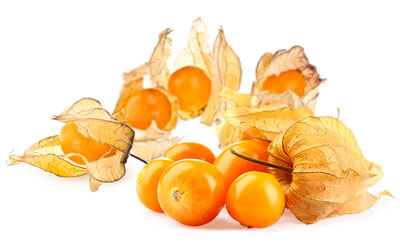Famously portrayed in William Shakespeare's work, the apricot is actually believed to have originated in ancient Chinese times. After its production spread across Asia, this stone fruit was brought to North America, where its successful production began in California. Today, the apricot is known for more than just its savory taste as it is used in various medicinal ways.
Apricot Medicinal Properties
- Medicinal action Digestive, Hypocholesterolemic
- Key constituents Sterols, squalene, carotenoids, phenolic compounds
- Ways to use Capsules, Hot infusions/tisanes, Food, Juiced, Essential oil, Dried
- Medicinal rating (3) Reasonably useful plant
- Safety ranking Safe
Health Benefits of Apricot
The benefits of apricot for human health are numerous, and can be obtained mostly by eating the fruit itself. Apricots are an excellent source of beta carotene, providing 30% of the recommended daily value. They also provide high amounts of vitamin C (ascorbic acid), potassium and fiber. Different parts of an apricot - the skin, fruit, and kernel - have an assortment of medicinal properties, including:
Reducing cholesterol levels. Apricots are high in beta-carotene and fiber, which contribute to reduce the harmful LDL cholesterol levels that cause arterial inflammation, thus helping prevent heart disease.
Encouraging regular bowel movements. The high fiber content found in the skin also has carminative effects and promote regular bowel movements. Apricot kernels have been proven to help with gastric problems, such as inflammatory diseases.
Moreover, apricot kernels and kernel oil have proven helpful in further instances as well, including:
Treating ear problems. Kernel oil drops have also proven beneficial in remedying otitis and tinnitus.
How It Works
The hypocholesterolemic properties of apricot are attributed to two important substances in apricot kernels: sterols and squalene. Sterols are plant compounds that interact with lipids and proteins, helping manage harmful LDL cholesterol levels. On the other hand, squalene, naturally ocurring in plants, but also produced by the liver, plays a role in the biosynthesis of cholesterol.1
The digestive benefits of apricots are due to the abundance of dietary fiber, which has been shown to improve the quality of gut flora, facilitating digestion and helping regulate bowel movements.2
Apricot consumption has increased in popularity due to its impressive nutritional profile. Like other Prunus species, apricots are rich in phenolic compounds, which have great antioxidant, cardioprotective properties, but boast the highest levels of carotenoids, necessary to maintain the health of eyes and skin, as well as for preventing degenerative diseases.
Among stone fruits, apricot is the most abundant in carotenoids, followed by peach, plum, and nectarine.
Other herbs with digestive properties are oregano and sage, while olive and avocado also help reduce harmful levels of cholesterol.
Apricot Side Effects
Apricots are mostly safe when consumed in moderation. However, eating too many apricot kernels can trigger mild to severe side effects, including vomiting, headaches, nausea, dizziness and other conditions of generalized weakness. This is due to trace amounts of amygdalin in the kernel, a naturally occurring cyanogen that can be toxic.
The cyanide content of apricot kernel varies and depends on several factors, including chemical components, cultivation practices, variety, origin, and more. Cooking or fermenting the seeds drastically reduces previous cyanide levels.
Consuming apricot kernels is generally safe for those who are allergic to nuts, as apricots are considered a stone fruit. Although, there have been some cases of clinical cross-reactivity in consumers with peanut and almond allergies.
Apricot Cautions
When eating apricot kernels, consumers are advised to take precaution. Those with preexisting health conditions, such deficiencies in vitamin B, iron or potassium, should consult a health professional before consuming apricot kernels - ground, crushed or any other type - to self-treat their deficiencies. This is especially true for pregnant or breast feeding women.
Apricot kernel oil is mostly safe when applied topically. However, it may cause skin irritation.
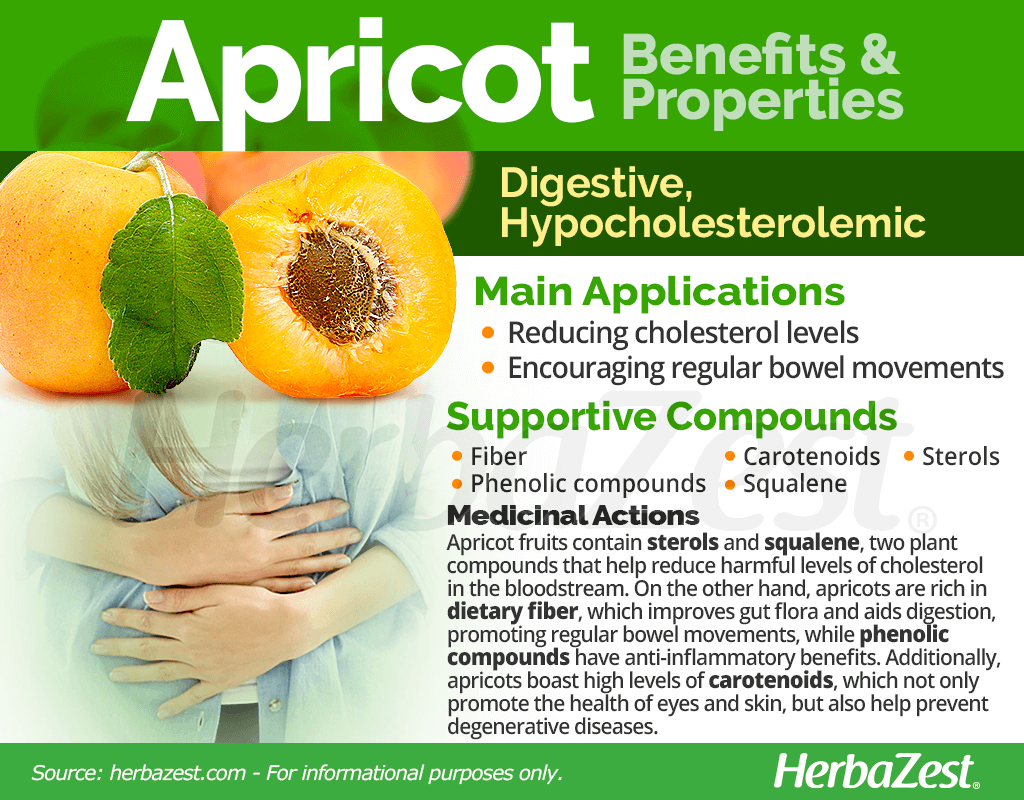
Apricot Nutrition
Apricots are a good source of vitamin A (as carotenoids), which is essential for growth and immunity, as well as for skin and eye health, along with vitamin C (ascorbic acid), which aids immunity and collagen production.
Additionally, apricot provide adequate amounts of: copper, which promotes red blood cells production, as well as supporting vascular, nerve, immune, and bones health; vitamin E, essential for cellular functions and plays an important role in enhancing immunity, as well as for preventing the formation of blood clots; potassium, important to the well-functioning of nerves and muscles, as well as for supporting cardiovascular health by regulating heartbeat; and vitamin B5 (pantothenic acid), a precursor of coenzyme A, which is required for the synthesis of proteins and fats.
Furthermore, apricots contain small amounts of vitamins, such as B complex, K (phylloquinone), and choline; as well as minerals, including manganese, zinc, phosphorus, magnesium, iron, and calcium.
100 grams of apricots provide 48 calories and 8% of the daily value for dietary fiber.

How to Consume Apricot
- Edible parts Fruit, Seed
- Edible uses Flavoring, Beverage, Oil
- Taste Sweet
The most effective way of obtaining the health benefits from apricot is by eating it raw, due to its high vitamin and mineral content. However, there are a myriad of ways in which this stone fruit can be prepared and utilized.
Natural Forms
Raw. In its purest form,apricot is an antioxidant fruit. Raw apricots can ease gastric inflammation, aid digestion, and act as a laxative among other benefits.
Dried. Once pitted and dried, apricot fruits still provide a great deal of nutrients and dietary fiber, with carminative effects.
Juice. Besides its fresh consumption, another easy way-of taking advantage of apricots' benefits can be through drinking their juice.
Infusion. Brewed apricot is acclaimed for helping boost metabolism.
Powder. Once dried and pulverized, apricot kernels can be sprinkled onto food dishes, or eaten as a supplement.
Preserves. In the form of jam, marmalade, or syrup, apricots lose most of their vitamin C but still offer good amounts of carotenoids and other essential compounds.
To preserve apricots past the growing season, many consumers choose to can or freeze them. It's wise to do so as soon as possible after the harvest, and the skins of the fruits can be left on.
Herbal Remedies & Supplements
Essential oil. Apricot essential oil drops can be used to help with otitis and tinnitus, as well as for skin care.
Capsules. Many consumers choose to take apricot supplements to absorb the kernel's nutrients instead of eating the fruit itself.
Growing
- Life cycle Annual
- Harvested parts Fruit
- Light requirements Full sun
- Soil Loamy sand, Silt loam, Well-drained
- Soil pH 6.1 – 6.5 (Slightly acidic)
- Growing habitat Warm climates
- USDA Plant Hardiness Zones 5a
- Pre-germination seed treatment Stratification
- Planting time Early spring, Right after last frost
- Propagation techniques Cuttings, Budding
- Potential insect pests Mites, Earwigs, Peach tree borers
- Potential animal pests Birds
Growing apricot trees requires very specific conditions. They grow best in dry areas, where little rainfall benefits them at blossom and maturity. Also, it's important to plant apricot trees in deep, well-drained, silt or sandy loam soil.
Growing Guidelines
The apricot plant should be planted in early spring in a site where there is full sun and protection from high winds.
An apricot tree requires about one to two inches of water weekly. As the tree ages, less water is needed but is still important.
In the third or fourth season after planted, the apricot tree will start bearing fruits. Harvesting usually occurs in the end of July and through August.
There are two primary methods of propagation for growing and apricot plant - sexual, which is the propagation by seed, and asexual, which consist of vegetative reproduction.
Apricot tree's most common diseases include coryneum blight, gummosis, and perennial canker.
Popular pests that attack the apricot tree are the greater peachtree borer and the peach twig borer.
Detailed information about growing apricots can be found in the herb garden section.
Additional Information
- Other uses Cosmetics
Plant Biology
An standard apricot tree can grow 20 - 30 feet (6 - 9 m) tall. While in ideal climates apricot trees have a lifespan of 75 years, in North America that period is shortened to 15 years. The leaves are oblong and two to four inches (5 - 10 cm) in diameter with a pointy tip. Blossoms are light pink in color and reach a size of about an inch. As an apricot ripens, it changes color into a fleshy yellow or orange fruit. The skin is smooth or covered in tiny hairs depending on the variety, and the kernel - the single seed inside - is protected by an outer shell, called the stone.
Classification
Apricot (Prunus armeniaca), also known as Armenian plum, is a part of the Rosaceae or rose family, which comprises about 2,830 species spread over 95 genera, including plants with great nutritional and medicinal powers, such as almond (Prunus dulcis), apple (Malus domestica), blackberry (Rubus fruticosus), cherry (Prunus spp.), hawthorn (Crataegus monogyna), pear (Pyrus communis), plum (Prunus domestica), raspberry (Rubus idaeus), and rose (Rosa canina.)
Cultivars of Apricots
The number and types of cultivated apricot varieties range depending on the growing region. Some varieties include 'Harcot', 'Veecot', 'Hargrand', 'Harogem,' and 'Harlayne.' It's important to keep in mind that even in the best environment, apricots are still only considered marginally commercial.
Historical Information
Apricots are believed to have originated in China over 4,000 years ago, and Spanish settlers are to credit for bringing the fruit to the New World, where successful cultivation in California began in the late 1700's.
Popular Beliefs
In ancient China, apricots were called Moons of the Faithful, and thought to enhance fertility. The apricot fruit was also considered an aphrodisiac in Europe, a belief enhanced by William Shakespeare's A Midsummer Night's Dream. And to this day, apricots are believed to induce child birth, as was shown in John Webster's The Duchess of Malfi.
Economic Data
Apricots are grown worldwide in many Asian countries, the Middle East and the Mediterranean, with North American production happening primarily in California, which grows about 95% of the total U.S. production. However, apricot's world production is led by Turkey, with 19%, followed by Uzbekistan, with 14%. When it comes to international trade, the main exporters of apricots are Spain, Turkey, France, and Italy.3
Other Uses
Cosmetics. Apricot kernel extract is often used as an ingredient in personal care products and DIY cosmetic recipes. It can also be used as a less expensive substitute for almond oil in some instances.
Sources
- Annals of Emergency Medicine, Acute Cyanide Toxicity Caused by Apricot Kernel Ingestion, 1998
- Cornell University, Apricot
- Food Chemistry, Antioxidant properties of roasted apricot (Prunus armeniaca L.) kernel, 2007
- Health Guidance, Health Benefits of Apricot
- Journal of Clinical Lipidology, Plant Sterols and Stanols: Their Role in Health and Disease, 2008
- National Gardening Association, Apricot Essentials
- National Institutes of Health, National Library of Medicine, Squalene
- Natural Bioactive Compounds from Fruits and Vegetables as Health Promoters - Part 1, pp. 111-112
- New World Encyclopedia, Apricot
- Penn State University, Stone Fruits: Peaches, Nectarines, Plums, Apricots, and Cherries
- Research in Pharmaceutical Sciences, Anti-inflammatory effect of Prunus armeniaca L. (Apricot) extracts ameliorates TNBS-induced ulcerative colitis in rats, 2014
- Toxicology Today, Cyanide Toxicity and Treatment, 2008
- University of Arizona, Apricot
- University of California, How to Manage Pests: Apricot
- University of California, Davis, Apricot in California
- University of Wisconsin, Growing Apricots, Cherries, Peaches, & Plums in Wisconsin
- Utah State University, Fruit Pests: Apricot
Footnotes:
- Natural Product Research. (2017). Sterols and squalene in apricot (Prunus armeniaca L.) kernel oils: the variety as a key factor. Retrieved May 3, 2023, from: https://pubmed.ncbi.nlm.nih.gov/26745662/
- Foods. (2019). Effects of Apricot Fibre on the Physicochemical Characteristics, the Sensory Properties and Bacterial Viability of Nonfat Probiotic Yoghurts. Retrieved May 3, 2023, from: https://www.ncbi.nlm.nih.gov/pmc/articles/PMC6352206/
- Emirates Journal of Food and Agriculture. (2021). Apricot production forecast of the leading countries in the period of 2018-2025. Retrieved May 12, 2023, from: https://www.google.com/url?sa=t&rct=j&q=&esrc=s&source=web&cd=&cad=rja&uact=8&ved=2ahUKEwjRndPYhPD-AhUYRTABHRZsCXUQFnoECA0QAw&url=https%3A%2F%2Fwww.ejfa.me%2Findex.php%2Fjournal%2Farticle%2Fdownload%2F2744%2F1495&usg=AOvVaw0S66BRJOJojupuPFlOfjSe
